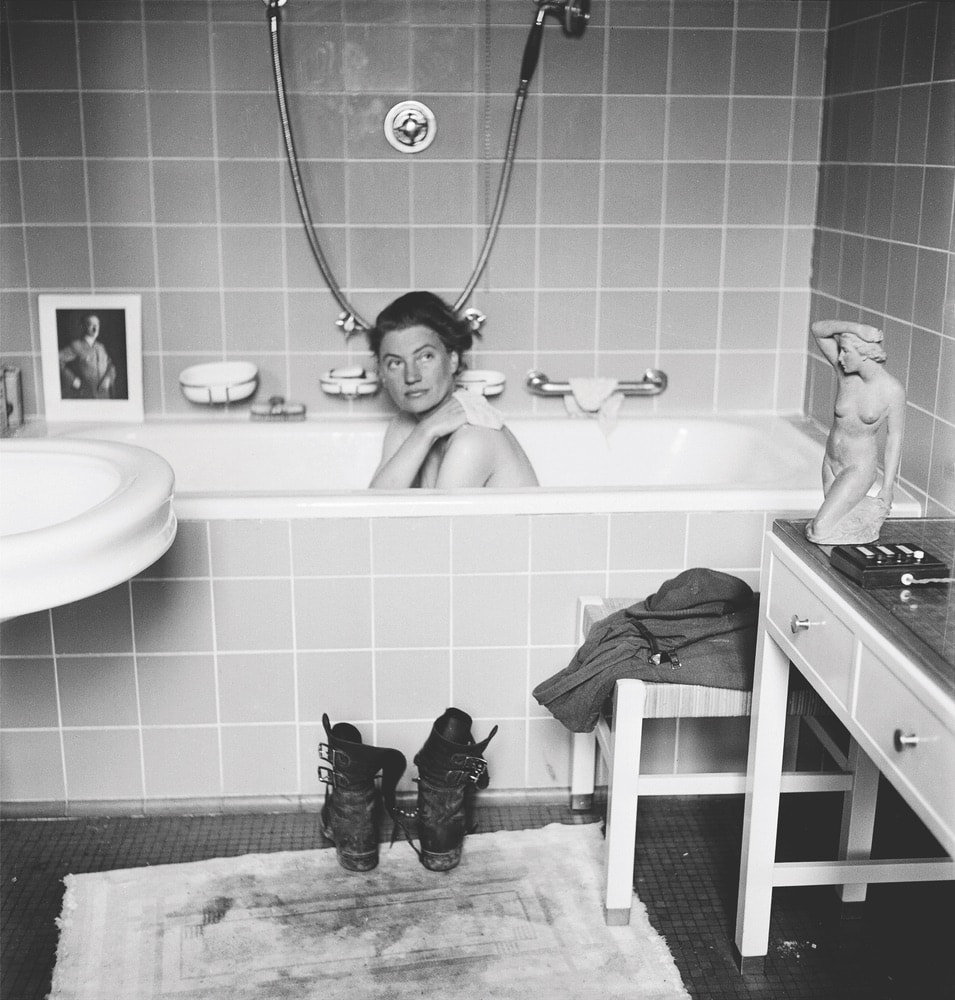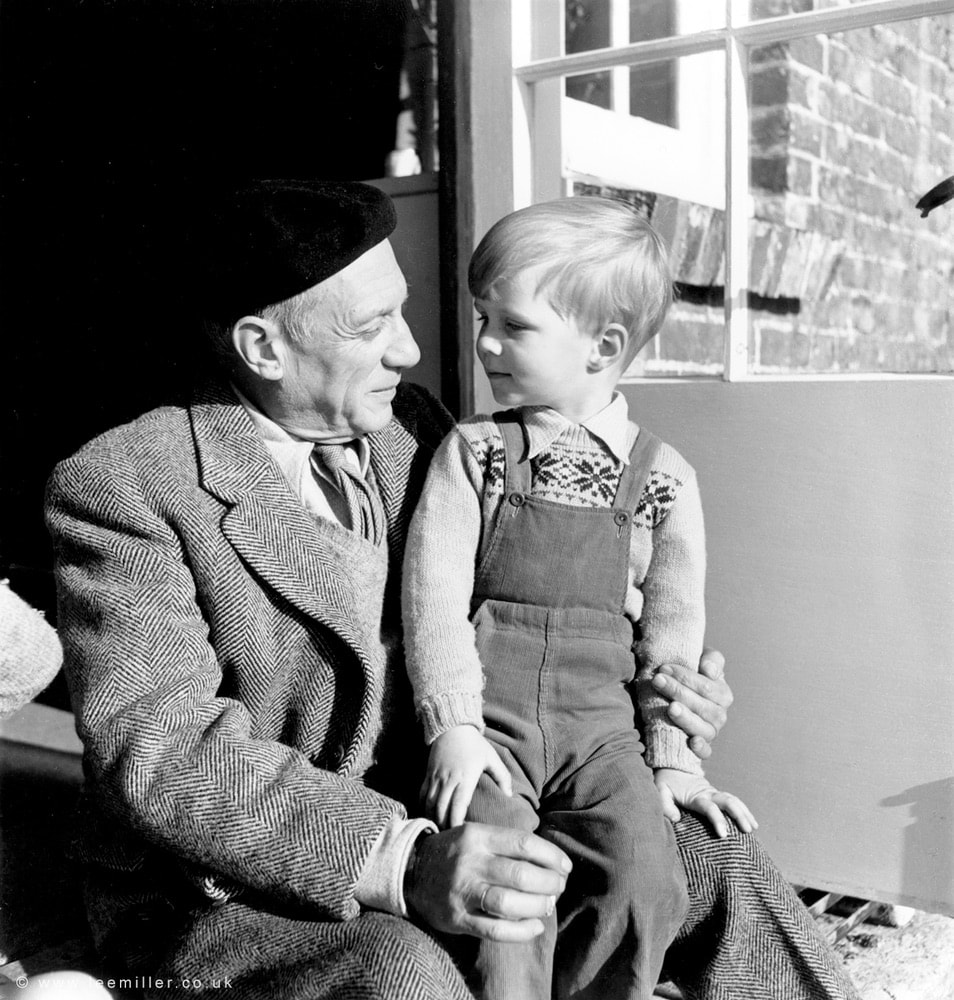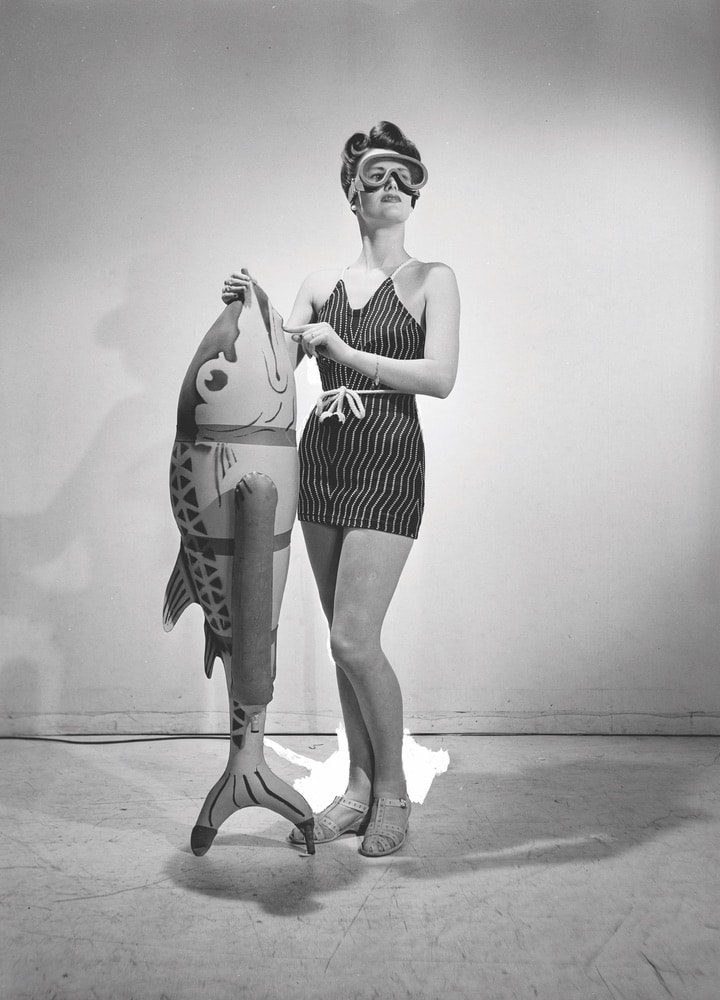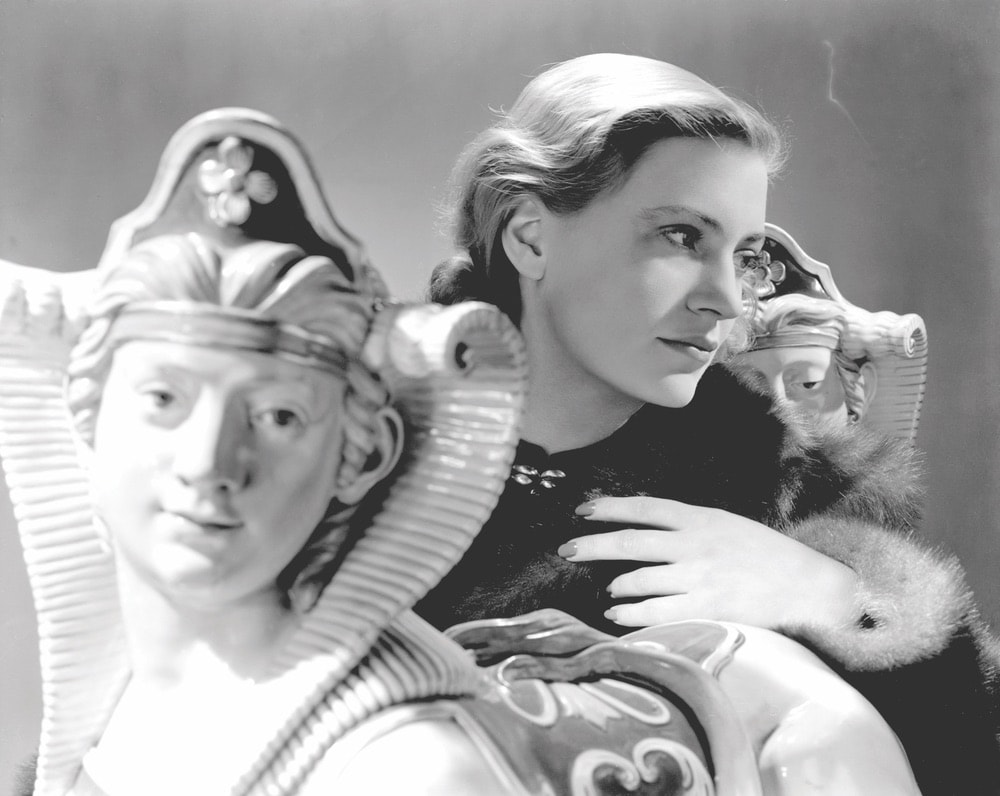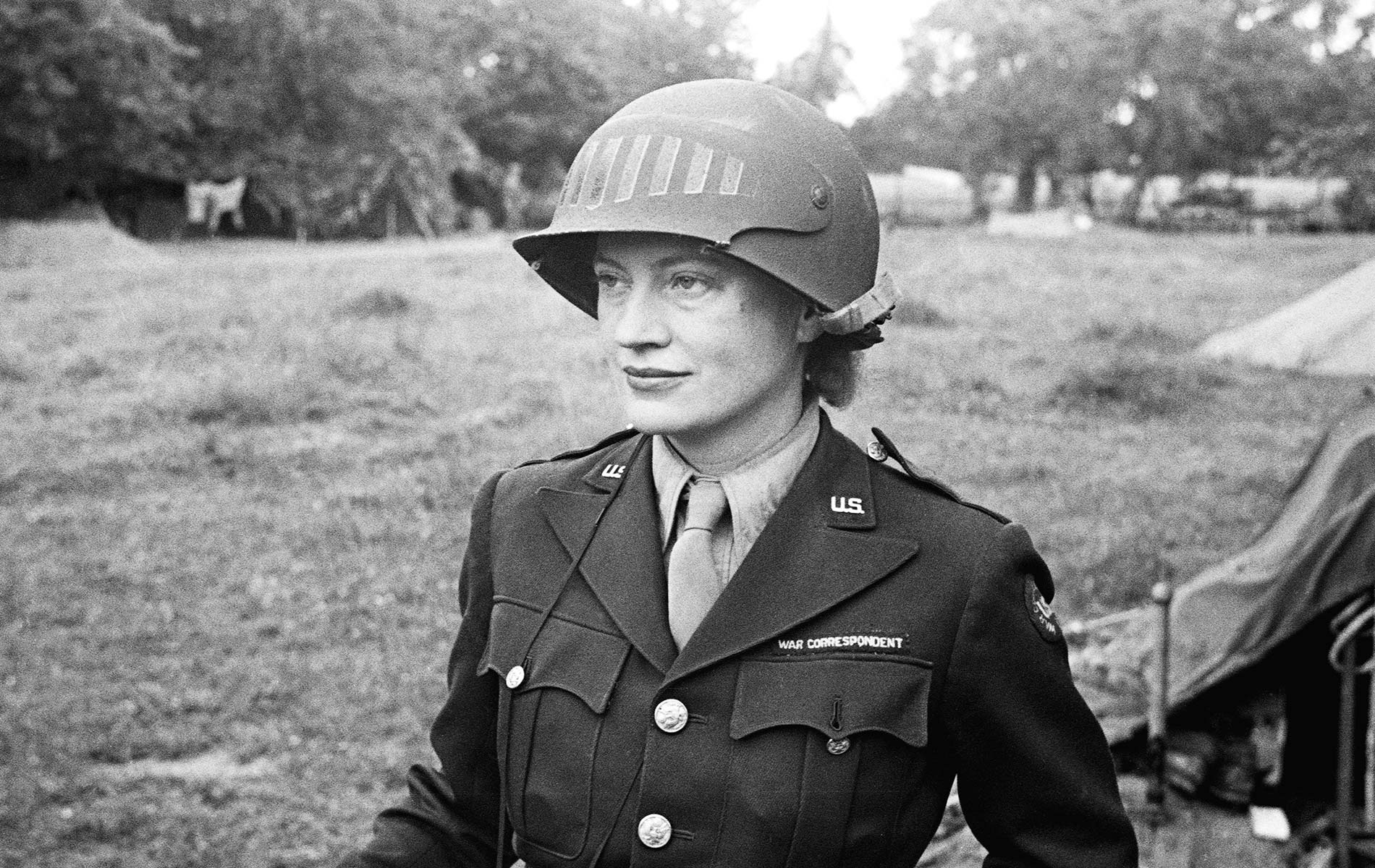
vie-magazine-lee-miller-hero-min
Lee Miller wearing special helmet borrowed from U.S Army photographer Don Sykes (Sergeant), Normandy, France 1944 © © Lee Miller Archives, England 2018. All rights reserved. leemiller.co.uk
Lee Miller
A Real Life So Surreal
By Anthea Gerrie
To the world, she was the model who became Man Ray’s muse before getting behind the camera and unexpectedly proving to be one of the greatest war photographers of her generation. But there was a dark side to the American artist who thumbed her nose at Hitler by crashing his Munich pad, dirtying his carpets with Dachau dust, and impudently climbing into his bathtub to try and scrub away the horror of the concentration camps she had just witnessed. Fruitlessly, as it happened, because the devastating effect of capturing what her son describes as “distressing images I can never unsee” turned Lee Miller into the opposite of a nurturing mother.
“We disliked each other intensely, and there was utter hostility between us for most of her life after I was born,” Antony Penrose frankly confides minutes after we sit down together at Farleys, the farmhouse deep in the southern English county of Sussex where he grew up.
“Like many alcoholics, Lee was unreliable; I never knew what to expect when I saw her at the weekend,” he explains. “We were enemies. She was never violent, but she could be humiliating, using words in a very damaging way. We fell out big time, much more often than we made up.”
It could have been a bleak childhood for the only child of Miller and British surrealist Roland Penrose had Antony not been brought up, like many upper-class British children, mainly by a loving nanny, with some unusual playmates as a child. He was befriended by Picasso, given a bespoke picture painted on the spot for him by Max Ernst, and even got to take another great surrealist, Joan Miró, to the zoo. “I had no idea they were famous; they were just friends who came to our house for the weekend and were more interested in small children than my mother was,” Antony shrugs. Such was life at Farleys: the tranquil country house became a social scene for the many famous artists the Penroses knew from their Paris days. Picasso, whose son Claude was the same age as Antony, was particularly kind to the little boy, and Miller took a remarkable portrait of her three-year-old sitting on the artist’s knee when he visited their Sussex home in 1950.
- Lee Miller in Hitler’s bathtub, Hitler’s apartment, Munich, Germany 1945By Lee Miller with David E. Scherman © Lee Miller Archives, England 2018. All rights reserved. leemiller.co.uk
- Picasso and Antony Penrose, Farleys House, Farley Farm, East Sussex, England 1950 Photo by Lee Miller © Courtesy Lee Miller Archives, England 2018. All rights reserved. leemiller.co.uk
- Bathing feature, Vogue Studio, London, England 1941 Photo by Lee Miller © Lee Miller Archives, England 2018. All rights reserved. www.leemiller.co.uk
- Self Portrait with sphinxes, Vogue Studio, London, England 1940Photo by Lee Miller © Lee Miller Archives, England 2018. All rights reserved. www.leemiller.co.uk
Of course, many of those guests came bearing gifts; as Penrose gives his confessional in the kitchen, I notice a hand-painted Picasso tile in the stove surround, and it’s not his only work hanging in the house. This unsung treasure trove of an eighteenth-century cottage, now dubbed “Home of the Surrealists,” is packed with paintings, sculptures, and decorative objects by all the family’s famous friends.
The generosity of the artists was reciprocated by their hosts, who were happy to please their guests with gifts from their collection, leaving their small son feeling quite disconcerted. “I’d find my favorite pictures disappearing from the walls—but the visitors always left some of their own.” And the most exquisite artwork in the house is a permanent fixture: the inglenook fireplace in the dining room painted by Roland Penrose. It celebrates an ancient hill figure known as the Long Man of Wilmington, which is chalked into the nearby Sussex Downs.
Opening up the house for summer visits and holding a full-on Surrealist Picnic annually in the sculpture garden are some of the ways Antony finances the hefty task of managing the enormous Miller archives, made up of thousands of images he uncovered in the attic in the months after her death in 1977. The discovery not only switched his focus from photographer to full-time curator but also forced a total reappraisal of the mother he had considered a monster and gave him a key to understanding her behavior.
But there was a dark side to the American artist who thumbed her nose at Hitler by crashing his Munich pad, dirtying his carpets with Dachau dust, and impudently climbing into his bathtub to try and scrub away the horror of the concentration camps she had just witnessed.
“I could not believe this hopeless drunk I grew up with was so brave, talented, and compassionate,” Antony admits as his first reaction when uncovering the hidden works of a woman he now realizes was emotionally fragile since being raped at the age of seven. “None of us, including my father with whom I had a tearful moment, had realized how much she was carrying until we examined her life through her photographs, and suddenly it became very clear.
“Those of us who have studied those photographs closely can’t get them out of our minds,” he adds. “They come back and haunt us; it’s a form of post-traumatic stress, because they are so deeply, deeply affecting. I went to Dachau twice to try and get a better understanding of what she was looking at—the piles of dead bodies—but I could only get a little fraction of what she experienced and captured in her pictures.”
On top of the harrowing experience of being sexually abused as a child and later witnessing piles of bodies and firing squads in action, Miller was even more affected by the children she photographed in Vienna after peace was declared. Many of them were dying from a lack of medicines, which had been stolen by black marketers. “For her, it was like being hit in the face with a brick,” explains Antony. “She longed for a fairer and better world, and when at the end of the war it was not delivered, and there were still people causing children to die, it became the root of her depression.”
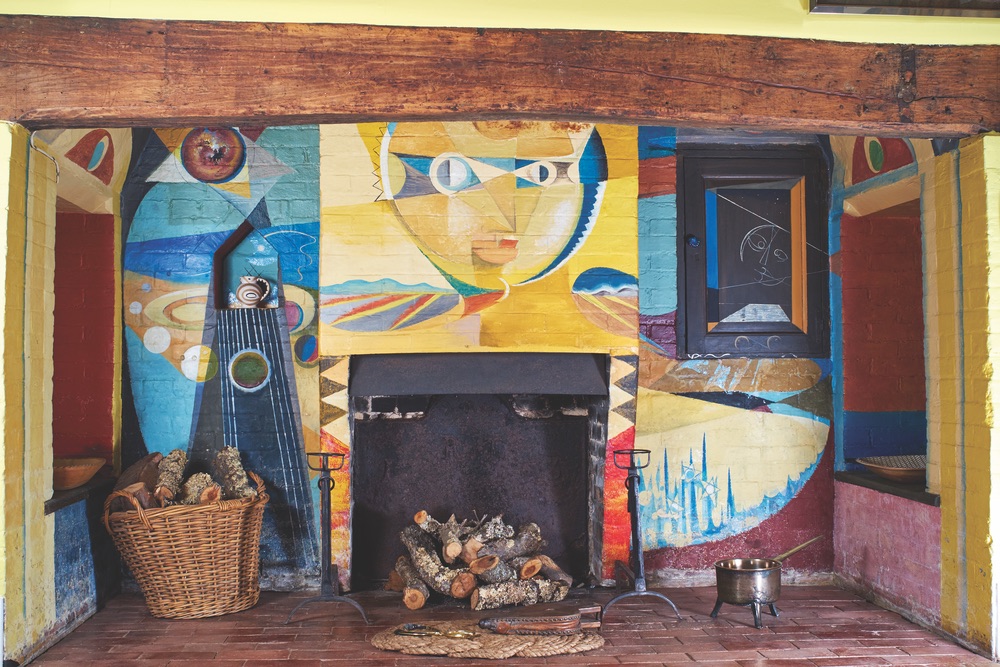
Fireplace, (mural by Roland Penrose, 1950), Farley House, East Sussex, England
Photo by Tony Tree
What is surprising is that, refusing to take medication and utterly distrustful of psychiatry, Miller literally cooked her way out of her depression. “It became more than a life belt to cling onto in a storm; it was a new pair of wings,” is how Antony puts it. “Lee was very generous-hearted and loved pleasing people, so she loved cooking.” Not that it improved family relations during the 1960s when her son would often turn the corner into the original brick-paved kitchen to the surreal sight of his mother dismembering a dead pig. “It was disastrous for me as a kid. Every time she was home, we’d have these complicated menus of ghastly delicacies she’d picked up wherever she’d happened to be, while I would be dreaming of poached eggs on toast.
“But it got her up and out of where she was. Her finest achievement was to create her own recovery with willpower alone. She didn’t give up drinking, but she got it totally under control.” And the surrealist guests, at least, were thrilled by the food. “The last thing they wanted when they visited was a standard roast and veg; they were after something witty!”
The story of the artist who Antony remembers as “appalled by motherhood” ended happily in the years before her death with an unexpected reconciliation engineered by Antony’s first wife, Suzanna, whom he met on a long trip abroad and brought home to live on the family estate. “She made a bridge between us after we had been so hostile toward each other most of our lives. The birth of my daughter, Ami, just beforehand was a great happiness to her.” It seems fitting that Ami, who now works for the Lee Miller Archives, has created her own tribute to the grandmother she hardly knew by creating a cookbook from recipes originally destined for an unpublished tome called Entertaining Freezers. If the name seems strange, remember it’s only what you’d expect from one of the original surrealists!
— V —
A new exhibition, Lee Miller and Surrealism in Britain, runs at the Hepworth Wakefield in Yorkshire, England, until October 7. Farleys House and Gallery is open Sundays from April through October. Visit FarleysHouseandGallery.co.uk to plan a trip.
Anthea Gerrie is based in the UK but travels the world in search of stories. Her special interests are architecture and design, culture, food, and drink, as well as the best places to visit in the world’s great playgrounds. She is a regular contributor to the Daily Mail, the Independent, and Blueprint.
Share This Story!
KEEP UP WITH THE LATEST STORIES FROM VIE



